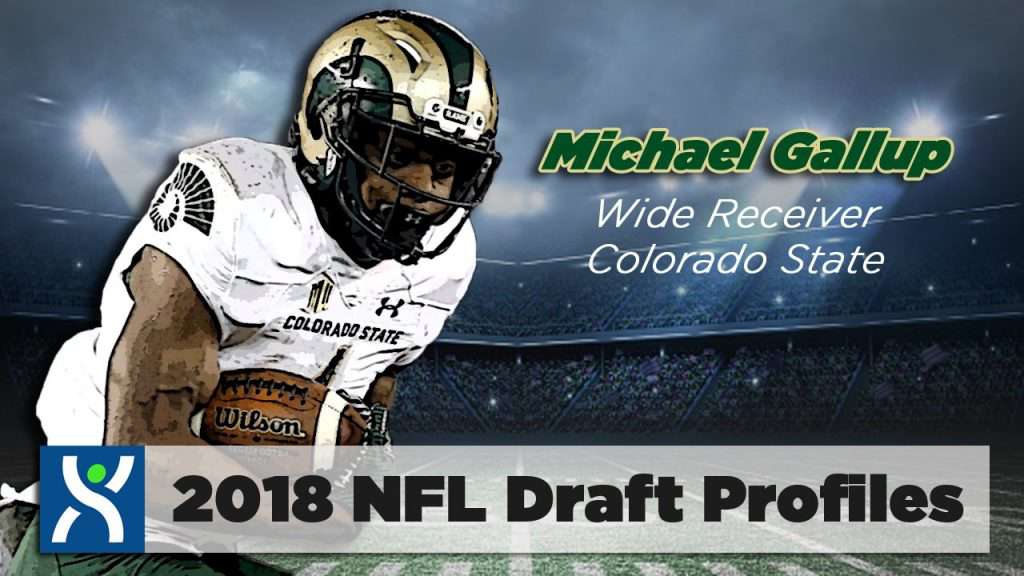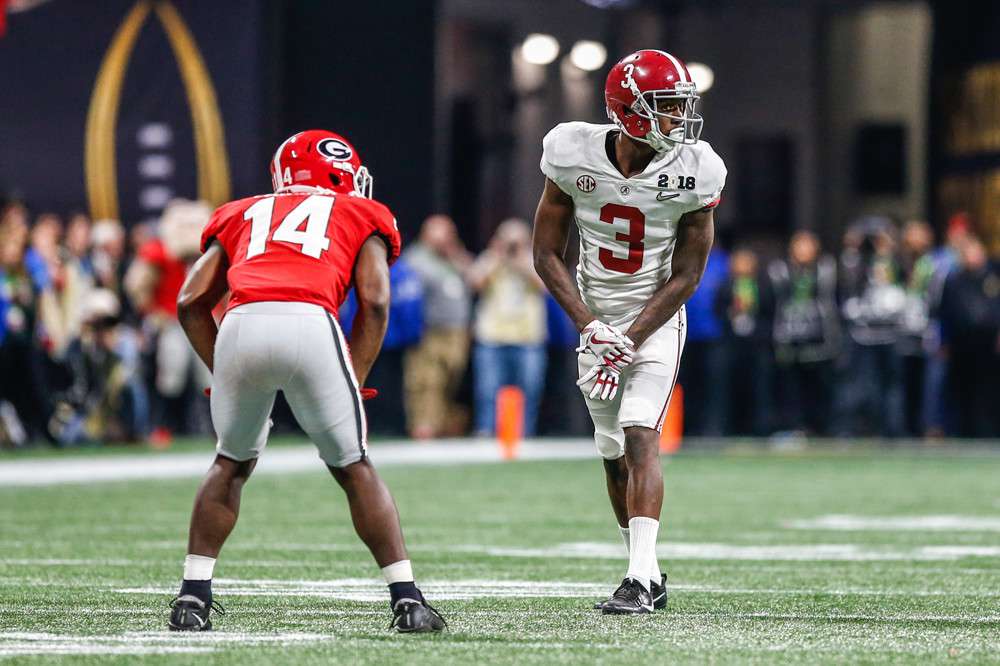
We’ve reached critical mass. Prospects shooting their shot on how soon they’ll be drafted. NFL GMs claiming that they’re willing to trade out of the top 10. Analysts, both amateur and professional, building and tearing down straw men at a moment’s notice. The league and its fans need the draft to come. Immediately.
Part I looked at the first 10 prospects expected to go early in the draft. Part II continues our inspection of the incoming class with some guys that could go on Day Two or later. However, keep the focus of the series in mind. Best fit. The skills and traits of the prospects in conjunction with the team’s offensive scheme and outlook will be analyzed for maximized potential. With some luck, fantasy owners will see their player’s value rise after they’re drafted into the NFL.
1. Rashaad Penny, RB – San Diego State
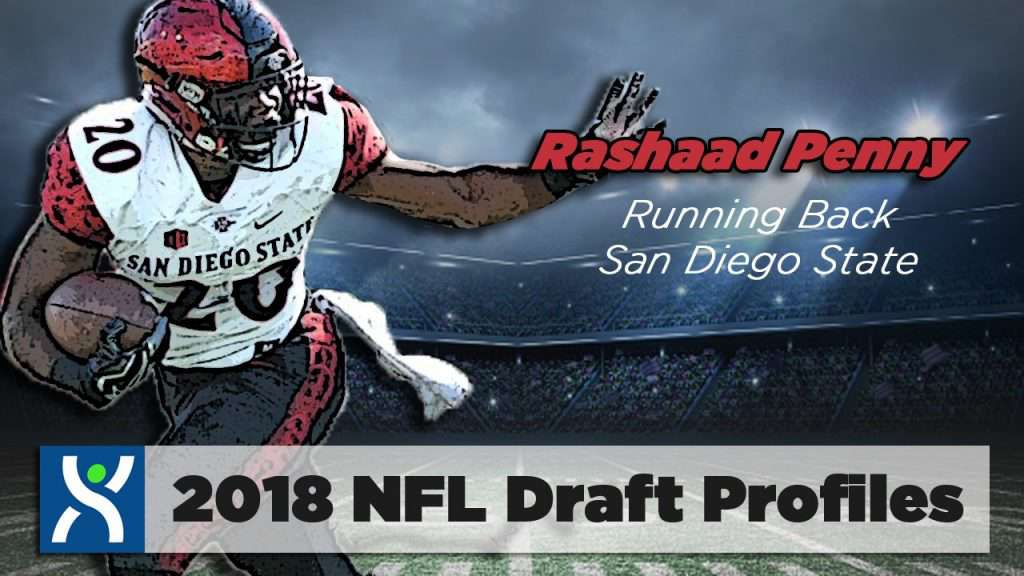
Best Fit – Denver Broncos
Pros: Penny’s vision and response to offensive line movement fit well with Denver. San Diego State employed gap plays to their ground attack, which would integrate well into Denver’s power running scheme. He has solid power with elite level speed and acceleration to get past the second level. Case Keenum would appreciate Penny’s ability to create yards on his own. His receiving capability will create third down opportunities for him with the potential to improve.
Cons: Denver’s pass blocking was bottom third in the league, and Case Keenum will need reliable personnel at all levels to stay upright. Penny struggled in his hand technique during pass protection. He’ll need to improve in this area to increase his snap rate. In addition, Penny doesn’t always play to his 220-pound billing. For the critical goal-line situations, Penny’s skills regarding head-on collisions will have to pick up in order for him to reach his full potential.
Overall: The Broncos are on the brink of fully rebuilding the franchise. They’ve brought in fresh talent, but age and impending cap space will force some hard decisions in 2019. If the team hopes to compete, they’ll need a functional run game to stay afloat. Devontae Booker hasn’t shown he’s ready to take the reins after C.J. Anderson’s departure. Penny can step in to compete while the younger talent develops.
2. Ronald Jones II, RB – USC
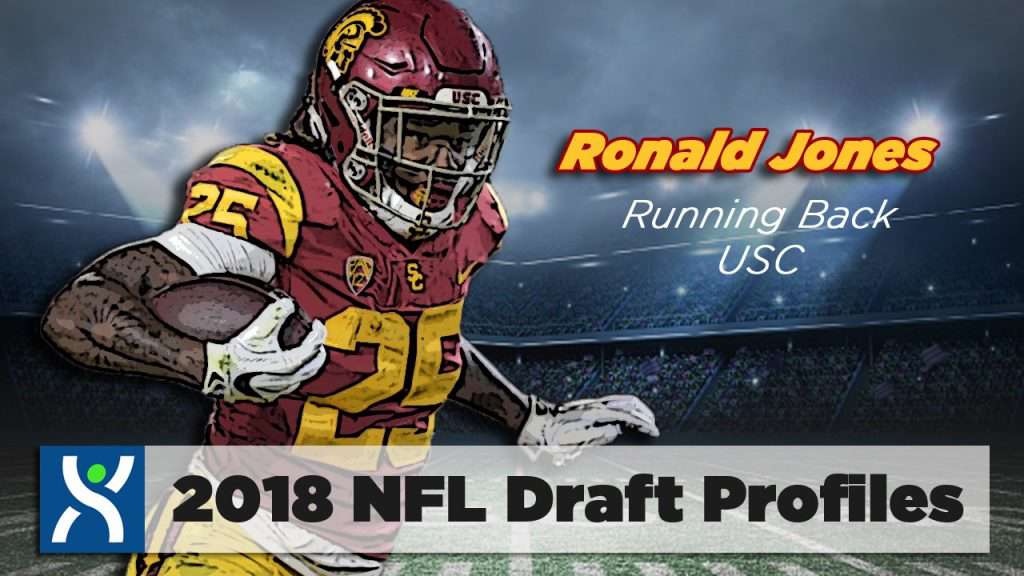
Best Fit – Philadelphia Eagles
Pros: Jones has been stylistically and athletically compared to both Jamaal Charles and Chris Johnson. It shows on film. Good balance, solid pass catcher, and a shifty runner with the ball. Jones can turn a seemingly two to three-yard loss into a positive gain. Jones’ speed will give defenders a tough time if they choose the wrong angle of pursuit. Another dual threat back to remove pressure from either Carson Wentz or Nick Foles would be well received in Philadelphia.
Cons: The way he invites contact from multiple defenders at his size provokes concern on how long he’d last during a single season. The Eagles are waiting for their franchise QB to return from injury, and their starting Jay Ajayi’s knee history is well documented. Jones would need to fix his in-game pace to avoid taking on unnecessary contact.
Overall: Dual-threat backs are the way of the new hotness in the NFL. Jay Ajayi proved himself worthy of a starting role, but his durability must be worrisome to the Eagles. Setting health aside, an addition of Jones’ talent would boost the value of the entire offense. Edge rushers would have to account for the versatility of both the running backs and QB retaining their offensive potency.
3. Calvin Ridley, WR – Alabama
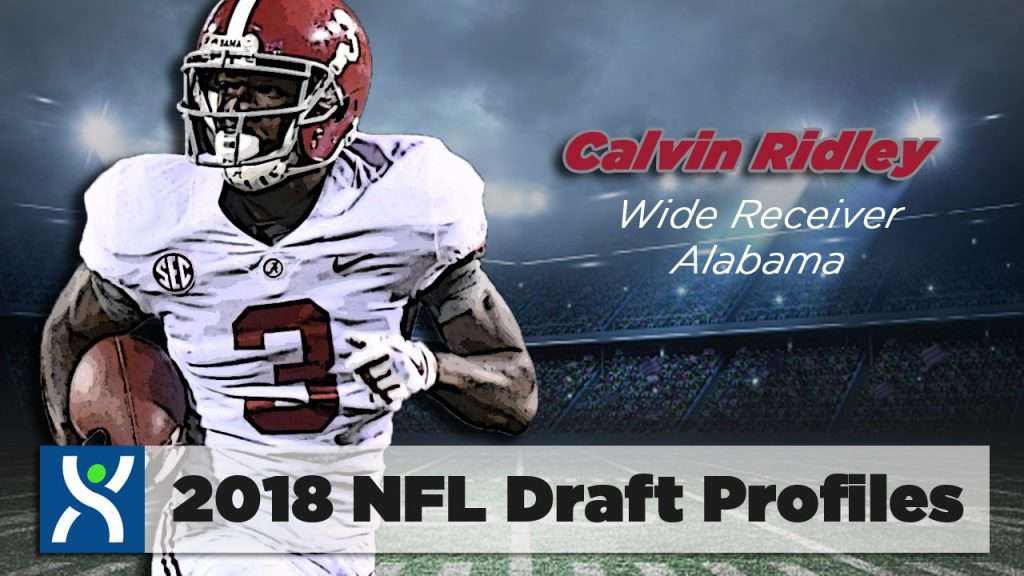
Best Fit – Dallas Cowboys
Pros: The Cowboys just released a wide receiver that struggled to create separation and had growing concerns of losing a step. Calvin Ridley’s been lauded for his polished route running and ran a 4.43 40-yard dash. Just makes sense. His footwork and hand techniques afford him separation for ample passing windows. He’s accustomed to running the full route tree and can work from both the outside and interior positions. With most of Dallas’ current receivers preferring the slot, Ridley would walk into a Week 1 starting role.
Cons: His skills in contested catch situations are unknown. Dez Bryant’s physicality will be sorely missed, and Dak Prescott’s struggles will only be exacerbated by non-aggressive receivers. Ridley has the speed but was taken down on first contact far too many times. The offense would function well between the 20s but could struggle in the red zone because of Ridley’s size.
Overall: Dallas just vacated 132 targets with the departure of Dez Bryant and are in need of a receiver capable of becoming their primary weapon. Dez won by being the better athlete. Ridley can do the same by being the better route runner. His thin frame will make his rookie year somewhat of a struggle, but the offense is still formidable with Ezekiel Elliot in the backfield. Dak’s willingness to throw into tight windows will test the rookie’s resolve in contested situations. However, Ridley’s primary and ancillary skills should win out in the long run.
4. D.J. Moore, WR – Maryland
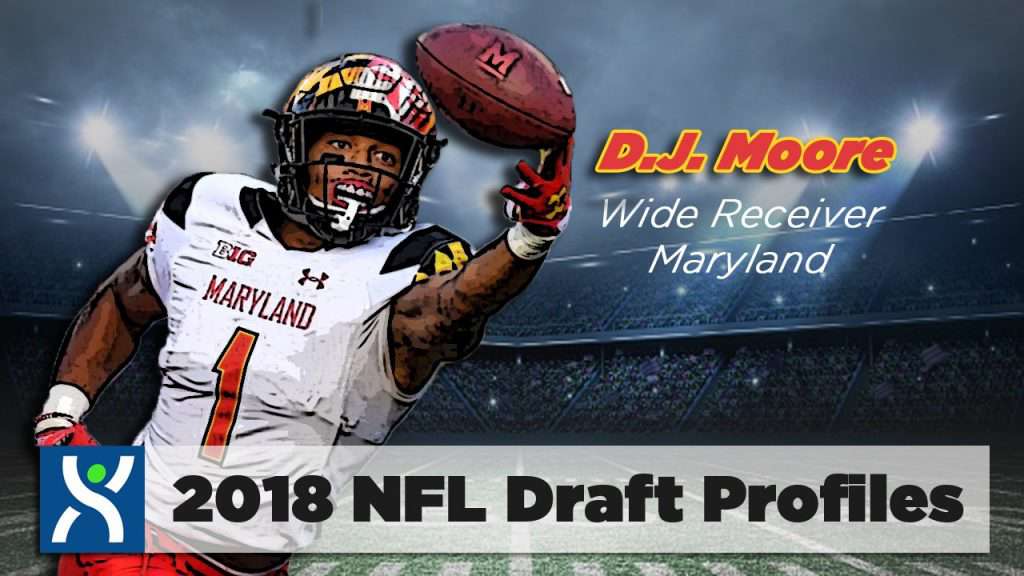
Best Fit – Green Bay Packers
Pros: D.J. Moore can operate from both the slot and outside receiver positions. His 6-foot-0, 210-pound size, coupled with his 4.42 speed, made him a weapon in both the short and intermediate ranges of the field at Maryland. The Packers could use someone with his skill set. We saw what happened when Green Bay moved Randall Cobb to the outside after Jordy Nelson went down in 2015. Moore can create separation regardless of coverage and has the speed to turn short catches into long gains. His success rate on short and intermediate routes would complement Davante Adams on the opposite with Randall Cobb allowed to work underneath.
Cons: Moore’s weak performances against press coverage could limit his exposure to two wide receiver sets on the offense. His release and hand technique will hamper his production on both press coverage and boundary routes. Aaron Rodgers’ back shoulder fades to Jordy were served on a weekly basis. Green Bay needs receivers that can win at all levels, and Moore will need to improve in this area to reach his maximum potential.
Overall: Adams has grown into the primary receiver in the offense. Cobb can work the slot and rotate into the backfield on special plays. Green Bay needs a receiver that can play the outside but doesn’t need to function as the primary read. That’s Moore through and through. Imagine Golden Tate playing with Rodgers. That’s the upside Moore’s abilities bring to Wisconsin his rookie year. His raw skills can make an immediate impact with the potential to improve within one of the NFC North’s best offenses.
5. Courtland Sutton, WR – SMU
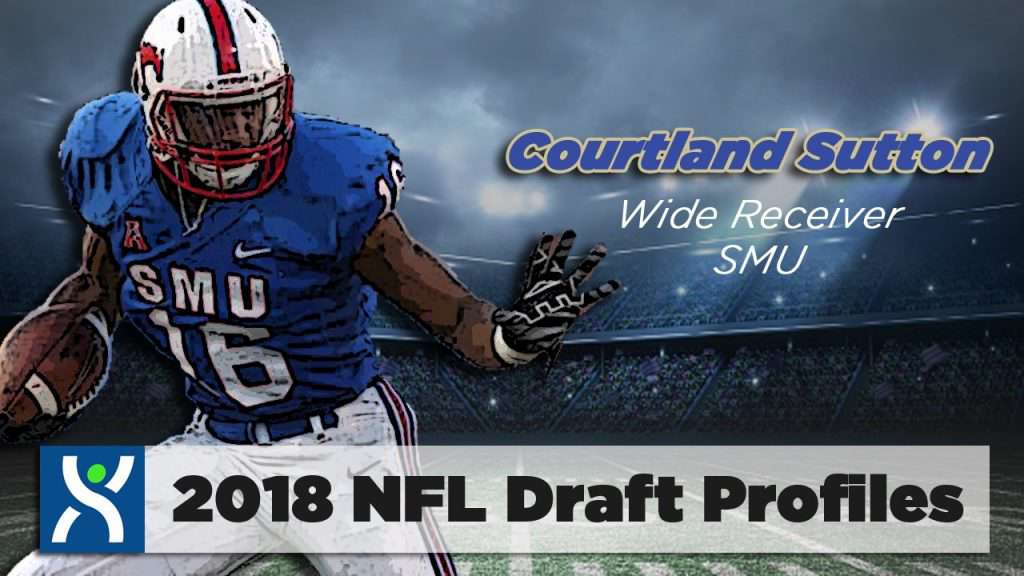
Best Fit – Carolina Panthers
Pros: Speed and athleticism are stamped across the acquisitions Carolina has made over the past two seasons. That’s Sutton’s game. His college tape shows frequent utilization in the deep game, as his 6-foot-3 frame seemed to glide past defenders for big plays. Sutton’s size and prowess in the red zone will only increase the Panthers’ scoring potential with multiple weapons on the boundary and capable runners on the interior. In addition, his physicality when the ball is in the air and elusiveness with the ball once it’s in his hands would balance the offense and take the pressure off Cam.
Cons: Sutton’s route running technique needs to drastically improve. The level of competition in the AAC allowed Sutton to “out-athlete” his competition and didn’t force him to develop his craft. His catch technique also led to a number of drops. An alligator-like clapping motion was on display in a number of games that must be fixed. There are also questions of effort surrounding his game. But, most importantly, his tendency to “out-athlete” defenders contributed to a number of offensive pass interference penalties in the red zone.
Overall: We’ve seen players like Sutton come through the draft with similar flaws and mesmerizing abilities. Alshon Jeffery, Demaryius Thomas or DeVante Parker all come to mind as superior athletes with red flags coming into the draft. The Panthers’ current roster and offensive mindset present a plausible path to success for the prospect. Sutton could function as a deep target for Newton, make some splash plays his rookie year while improving his technique. With Greg Olsen set to leave after 2018, the offense will need a receiver that can execute intermediate timing routes. Sutton will have to show he’s ready for the professional level to meet the potential his highlight reels suggest he possesses.
6. James Washington, WR – Oklahoma State
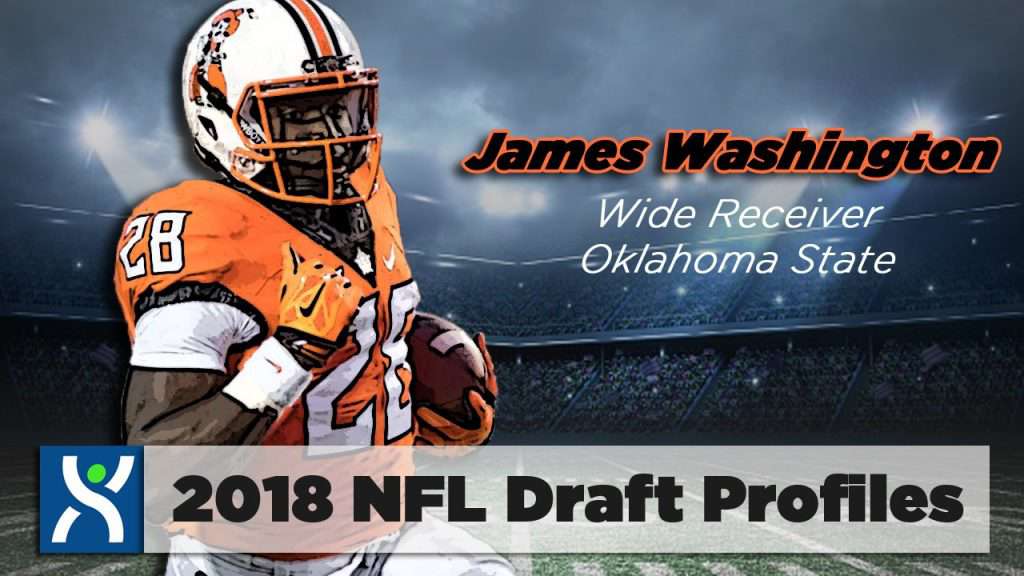
Best Fit – Seattle Seahawks
Pros: Washington would instantly fill the hole left by Paul Richardson. His speed doesn’t compare to Richardson’s, but he can win where Richardson doesn’t. Washington showed success on virtually every route. Smooth release technique, solid footwork, and fluid movement once the ball is in his hands — Washington can do it all. In a receiving group led by Doug Baldwin and Tyler Lockett, the Oklahoma State star would be the missing link. Remember those deep passes Russell Wilson lobbed to Richardson during the Texans game? James Washington could fulfill that role in his rookie year as he gets in sync with Wilson.
Cons: Washington’s college alignment data would suggest he can only play on the outside. Seattle receivers have specialized in rotating from the boundary into the slot as coverage dictates. An offense that runs on chaos needs versatile weapons to keep them on the field. His spatial awareness on the perimeter also needs improvement. Wilson’s ball placement on boundary passes and overall efficiency has been at an elite level for years. A minor and fixable flaw, but Washington will need to develop this skill throughout his rookie year.
Overall: For a class with seemingly no prototypical X receivers, Washington sure does come close to being one. His size and subsequent physicality in contested catch situations could be called into question, but his technique indicates he’ll be up to the task when the time comes. There’s no telling if Lockett’s 2016 injury has capped his athletic ability. Regardless, another potential star receiver paired with one of the league’s best passers could only lead to ESPN highlights.
7. Dallas Goedert, TE – South Dakota State
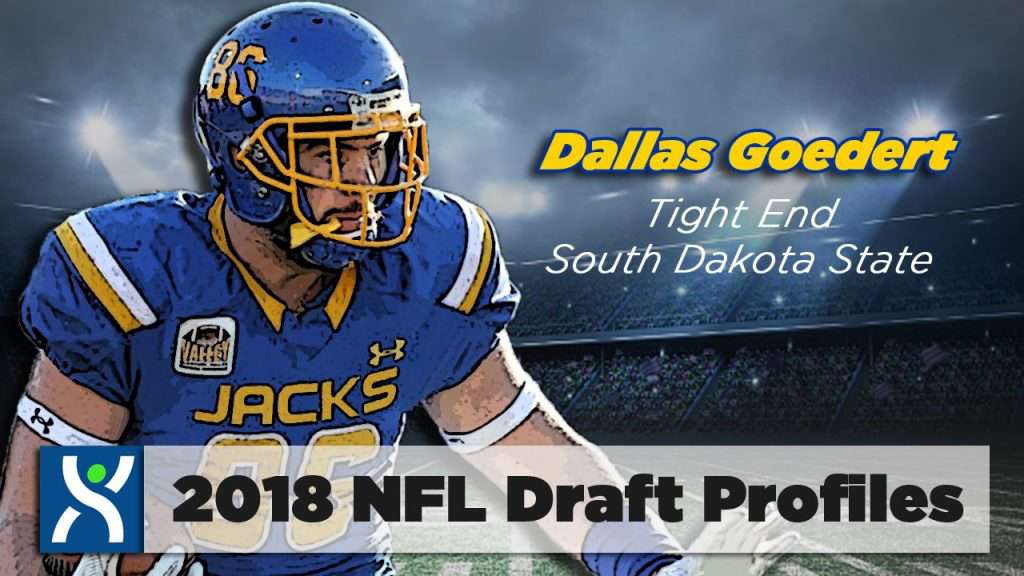
Best Fit – Baltimore Ravens
Pros: Jimmy Graham comparisons. Formidable route runner. Can work from the slot and off the line. Capable blocker. What more can you ask for out of a tight end prospect? Goedert’s talent extends to multiple functions within the offense. Baltimore is already known for its TE friendly passing attack, and Goedert would serve as another cog in it. Flacco’s depressed AY/A of 5.3 and the addition of Willie Snead indicate Flacco’s settling into a conservative offense under Marty Mornhinweg. With Goedert’s consistent ability to beat linebackers, the Ravens could assert themselves in the AFC North.
Cons: Goedert shows competency in catching the ball, but he hasn’t developed the skills to extend plays past the catch point. His ability as a runner, specifically his acceleration after the catch, would need to develop to stretch the field. Shallow routes showed improvement his final year, but development is still required in this area. Flacco’s depth of target favored this area of the field and would serve Goedert well to reliably function in this section.
Overall: Dennis Pitta. Benjamin Watson. Owen Daniels. Even Ed Dickson. The Ravens tight end has always held fantasy value. Goedert’s current receiving ability would earn him a few targets per week within the offense. Given time to work at his craft, as both a blocker and receiver, he could maximize his potential within the offense.
8. Mark Andrews, TE – Oklahoma
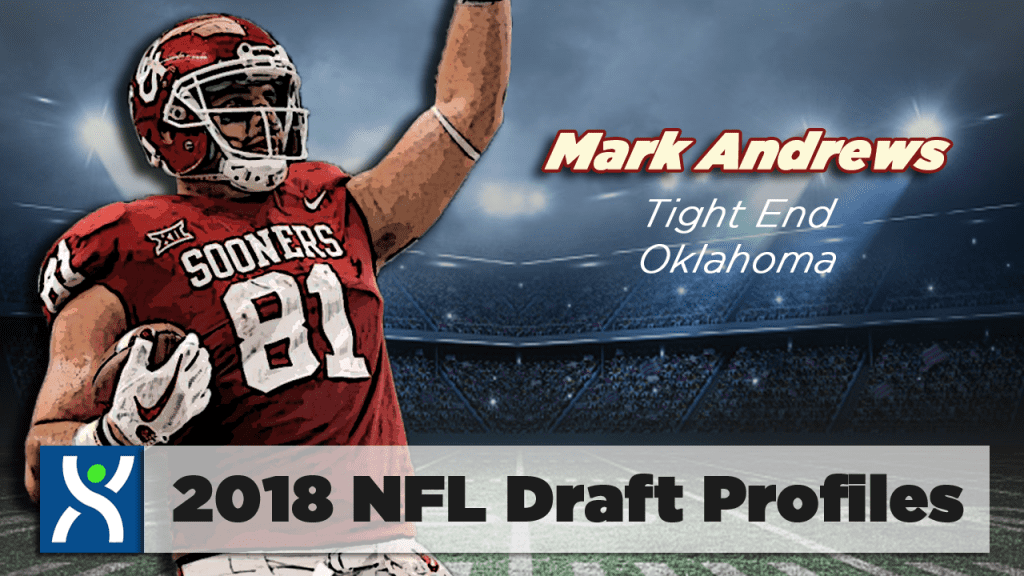
Best Fit – San Francisco 49ers
Pros: Mark Andrews is a converted receiver, and his college tape reflects that. He’s a solid route runner that knows how to work the first and second levels of the field seemingly with ease. His technique leads to quick separation, creating easy throws for QBs under duress. Oklahoma used heavy play action to scheme him open, which fits into Kyle Shanahan’s philosophy. San Francisco’s current depth won’t force Andrews into the spotlight, but it will allow him to develop in a few key areas.
Cons: Andrews offers nothing as a blocker. San Francisco could use him as a traditional move tight end, but as the offense rebuilds, he’ll need to increase his utility to maintain a position on the team. His Type 1 diabetes is also a concern. It’s manageable, but the team will need to closely monitor his health throughout his career.
Overall: At this point in his development, Andrews is more of a large slot receiver that arguably benefited from being on the field with Baker Mayfield. In San Francisco, he’ll have the time to change that perception. The team currently has capable tight ends that can teach the prospect proper hand placement and blocking techniques. The franchise’s efforts to rebuild the team should provide Andrews with the time he needs to develop at the position and giving San Francisco another receiving option on offense.
9. Michael Gallup, WR – Colorado State
Best Fit – Indianapolis Colts
Pros: Gallup would be an excellent complement to T.Y. Hilton. His route-running ability makes him a threat in the intermediate and vertical passing game. This opens up splash plays for Gallup while allowing Hilton to run his typical route tree without additional defensive coverage. The Colorado State prospect can identify soft spots in zones for easy throws and can win contested catches and throws through tight windows. Assuming Andrew Luck starts the season, he’ll be knocking off some rust readjusting to the speed at the NFL level. Gallup’s presence would be an ideal time for the two to get in sync and develop a rapport.
Cons: There are still some inconsistencies to Gallup’s game. His routes can be crisp, but he can still tip defenders with his shoulder movement. He has the quickness to overtake defenders in the first few steps, but he lacks the long speed to take it to the house. Gallup can make contested catches, but he suffers from focus drops in key situations. Not completely damning of his outlook, but flaws that must be addressed.
Overall: Behind Hilton, the Colts are relying on Ryan Grant, Chester Rogers, and Krishawn Hogan to name a few other receivers. Not ideal for a team easing its franchise QB back into action from a near career-ending injury. The aforementioned receivers have had time in the league without much production. Gallup has his warts, but his potential eclipses the current players on the Colts’ roster. Giving Gallup the chance to develop with Andrew Luck would be beneficial to both him and the Colts. He continues to improve and can reach his ceiling.
10. Equanimeous Tristan Imhotep J. St. Brown, WR – Notre Dame
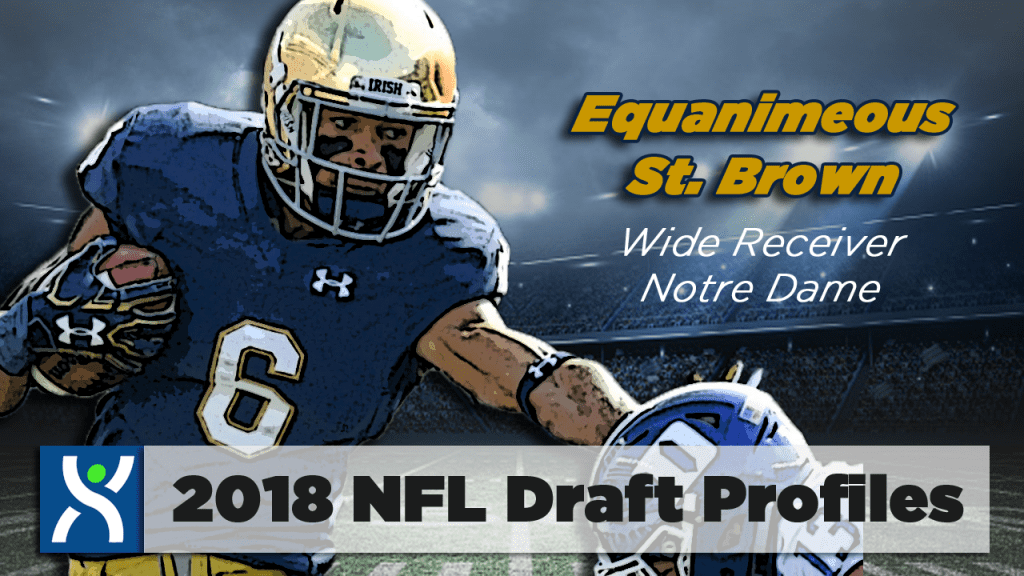
Best Fit – Arizona Cardinals
Pros: The Cardinals could use someone with St. Brown’s skill on the outside. At 6-foot-5 and 214 pounds with 4.48 speed, ESB would profile as the primary receiver in Arizona’s offense. A dangerous route runner, St. Brown showed strong success rates against zone and man coverage. His balance and vision after the catch are near elite levels for a prospect. Tough at the catch point with the power to move defenders once they come into contact, the Notre Dame product would instantly make highlight reels … and not just for his last name.
Cons: St. Brown’s entire game seems to get thrown off whenever he’s presented with press coverage. Veteran corners will be able to figure out his weaknesses and exploit this flaw pretty quickly. His athletic skills are at near elite levels, but his technical acumen is still on the raw side. Improving the finer points of both route running and hand technique prior to the catch would instantly boost his status within the league.
Overall: Arizona has a weak wide receiver depth chart and a quarterback that was sidelined the majority of 2017 with knee issues. While fantasy owners are more concerned with David Johnson’s outlook, the rest of the offense still needs to function. Brown’s presence on the outside, coupled with Larry Fitzgerald working the slot, would keep David Johnson from seeing stacked boxes every down. The Cardinals get a weapon on the outside, and St. Brown gets to integrate into a pass-heavy offense currently in transition.

